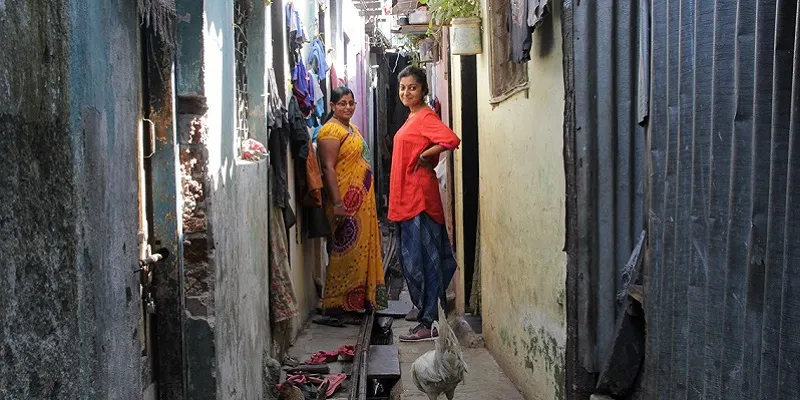Handmade, upcycled and women-powered ‘Chindi’
As most beautiful things do, Chindi started as a fun project from Tanushri Shukla’s love for knitting. Along with a friend who loved to crochet, the duo started making small things and gifting them to friends. All the raw material was waste that was generated at Tanushri’s family-run wholesale garment manufacturing unit. There are tonnes of waste fabric that the tailors call chindi that are generated every day and, currently, most of this leftover fabric is tossed into garbage. The response Tanushri got to their tiny gifts was overwhelming and it organically grew into an organisation. Chindi started working with women from Mankhud slum in Mumbai about a year-and-a-half ago and has developed itself into a design firm that handmakes and upcycles products. Tanushri also believes that the best-case scenario for an organisation like Chindi would be that it becomes redundant and all organisations upcycle their own waste, but we’re a long way from that. In this conversation with SlowTech, Tanushri talks about her experience of working with a small group of women, their ideology of scale and thoughts on mass manufacturing.


ST: Tell us about the initial days of your coming in touch with the women at Mankhud and how things started.TS: One of the women who worked at the sewing unit of the factory was employed to do handwork. She lived in a slum in Mankhurd. One day, she saw me knitting and crocheting with fabric and mentioned she knew how to crochet and so did many of her neighbours. She took me along into her community where we had a tea party with her neighbours and they all showed us the fabulous things they had knitted and crocheted--sweaters, hats, rugs. These women were all displaced North Indian migrants who had all grown up knitting and crocheting, and now in the city they didn't find any use for these skills so it was all going to waste. Purely out of need, many of them would turn their old clothes into blankets or rugs for their homes. They were already living the Chindi lifestyle! We asked a few of them to use their skill with our waste fabric and that's how we came to work with our community of craftswomen.
ST: How many women are you working with? How is the operational relationship? Do they work from home, come to a community space?
TS: All of our craftswomen live in the slums of Mankhurd--we now have a core team of four women and we employ more women as needed on an order basis. We have a central space in the neighbourhood, as most of them aren't really allowed to go out of the house for work. In fact, the reason they work with Chindi is because they can work from home, flexibly, in their own time. The center is a space to meet, share ideas, collaborate on new products and designs. And then they take the piece and finish it at home.

ST: How did you figure out the designs and training? What did you start making first?
TS: Our design and product strategy has remained the same from the very beginning--looking at the skills, patterns, and products the women already make, and using them as inspiration. For instance, our first product, which continues to remain our bestseller, are our rugs, something we started making purely because that's what the women were making at home with their old clothes. We just add a bit of design intervention. All of our products are inspired by them and their lifestyles, which are inherently less wasteful.
ST: How long has it been? What do you see- are women able to generate a reasonable livelihood? Are they doing it full time? Your thoughts.
TS: We've now been working with our women for close to a year-and-a-half. They're like my family. We have gone through the entire journey of setting up, sampling, seeing what works, being disappointed, being elated, and building our success together. It's been an amazing experience. All of the women we work with had never held paying jobs before this, but now many of them have been inspired to sign up for sewing classes and work from home. This has been the greatest gratification. Our women will always be part-time employees because their family and home duties always occupy centre stage, so we are careful about how much work we give them, so that their other duties are not affected. Building Chindi has been a gradual process; the first year was about experimenting and making mistakes. Now we have a good idea of our product, our design language, and our customer. So I hope that in the time to come, we will be able to incorporate more women into our core team and expand our impact.
ST: It's impossible to compete on prices with mass-mechanised manufacturing. Where do you think the future lies? What's your philosophy?
TS: The future is handmade and upcycled!
I always say that Chindi's greatest success will be in our own redundancy--in the future, design houses, brands, and fashion houses will all be recycling and reusing their own waste and it won't even be necessary to have an organisation like ours! We can already see the industry moving toward this, and it's really great to see.
That being said, there will always be a place for handmade versus mass-made products. I don't think the two compete with each other, they just can't, on price point, time of making, supply chain etc. Each of our pieces takes days or weeks to make, we pay every member of our supply chain fairly, our raw material is an unpredictable resource and our design process is backwards so we have to design as per the material we have, not the other way around. So, of course, our overall time and effort involved is much more than brands making a replicable product. But, on the other hand, our overheads are low because each piece needs just one crochet hook or a pair of knitting needles to make. There is a simplicity and genuinity in that. And I think customers are really starting to understand and value this.
We're not trying to compete with mass-made brands on price, but we do wish to compete on quality and design. A customer will ultimately spend money on something because they like it. It will not and should not be a pity purchase, where you buy a handbag to support a community and then never use it because you never really liked it. That defeats the purpose and just becomes another piece of waste. So we take a lot of care on our design and quality of make so that our products stand on their own right.
There is an inherent challenge of scale here--will we ever be able to churn out thousands of pieces on a daily basis? Yes, we could, but is that our goal? No, not really. I like to think of scale as depth rather than breadth--we are creating a few carefully designed pieces that we know our audience will love and use. Our women are paid fairly and they also find a creative satisfaction in this work, and so there's a depth of impact. This is what we're aiming for.
ST: What is Chindi working on currently? What are the future plans?
TS: We have evolved into a small design house that makes limited ranges of carefully made, one-of-a-kind pieces. After a year of experimenting, we are now buckling down to establish our product range and brand based on everything we've learned. We've started looking at our slow approach as our strength and we're really taking our time with each piece we make, collaborating with the craftswomen making it on design and technique. We've also started working with a few tailors in our community to expand our product range and use the waste generated by their businesses to supplement their income and support that community.
Visit the Chindi website and write to us at [email protected] if you want to get involved.







